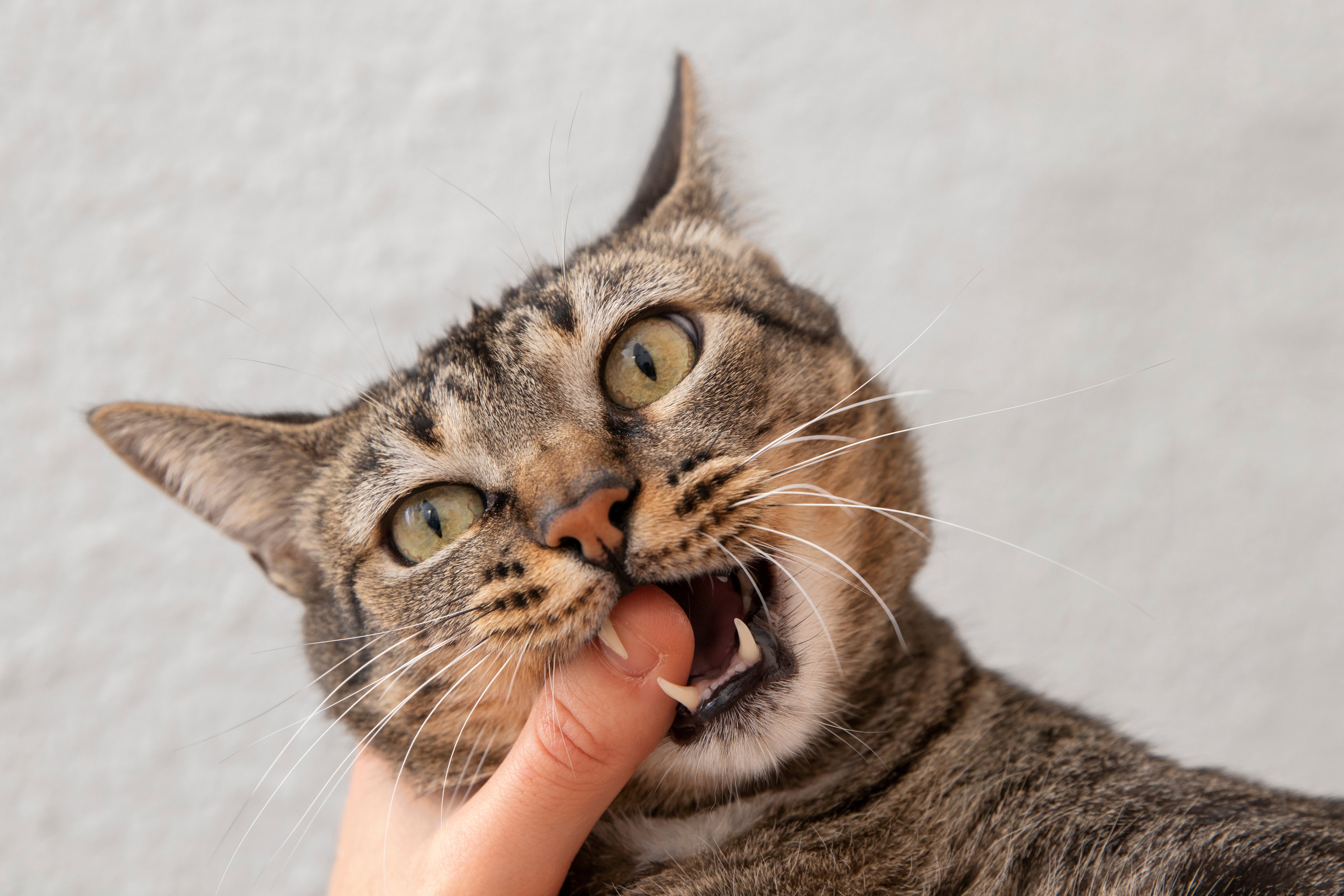
- by Dr.Thilo Senst
Spot the Warning Signs Early: Is Your Cat Suffering from Tooth Pain?
- by Dr.Thilo Senst
This site uses cookies for better user experience and analytics.

Cats are famously snooty connoisseurs—picky with their meals, unamused by your attempts at fetch, and perpetually convinced they’re running the household (they’re right). But there’s one area of feline life that remains shrouded in mystery for many owners: cat teeth. Yes, those little daggers of fluff-powered cuteness can harbour all sorts of problems, from wincing toothaches to stealthy gum disease. If your purring prince or princess suddenly seems off their food, or if they’re giving you the stink-eye before mealtime, tooth pain could be the culprit.
But how do you know if your cat’s unamused expression is just them being their usual regal self or a sign of a legitimate tooth crisis? Worry not, dear reader. In this comedic extravaganza, we’ll explore everything you need to know about spotting signs of tooth pain in your cat—and, more importantly, how to keep those cat teeth gleaming and pain-free. We’ll throw in some UK-based stats, a few daft analogies (brace yourself), beneficial tips, plus an FAQ to quell your frantic Googling. By the end, you’ll have the comedic confidence and knowledge to handle your cat’s tooth troubles like a pro, minus the “why are you touching my face, human?” stares.
So put the kettle on, find a comfy seat that your cat has graciously allowed you to use, and let’s delve into the sometimes stinky, sometimes comedic, but absolutely crucial world of cat teeth care.
If you’ve ever marvelled at your cat effortlessly tearing into a crunchy kibble or a tidbit of chicken, you know their cat teeth are sharp little wonders. Indeed, a cat’s teeth are essential for:
When something’s wrong with those cat teeth, the entire equilibrium of your kitty’s life can teeter. Picture them feigning disinterest in that favourite treat—blasphemy! Or skipping grooming sessions, leading to messy fur. The knock-on effects of tooth pain can be more dramatic than a West End musical. Trust me, you don’t want to ignore it.
Think of cat teeth like a tiny toolbelt your feline totes around. Each tooth serves a purpose: some for slicing, some for gripping. If one or more tools go rusty (read: infected or painful), the entire job—i.e., munching, grooming, self-defence—becomes a comedic fiasco. Your cat might attempt to hammer in a nail (chew kibble) with a broken spanner (decayed tooth) and promptly give up in frustration. The result? Potential malnutrition, weight loss, or an ill-tempered cat who hisses at anything that moves.
How do you know if your cat is dealing with tooth pain rather than simply ignoring you in typical feline style? Watch out for these telltale clues:
Bad Breath (Halitosis)
Drooling or Pawing at the Mouth
Reduced Appetite or Preference for Soft Foods
Tilting the Head While Eating
Weight Loss or Sudden Grumpiness
Swollen or Bleeding Gums
If any combination of these signs rings a bell, you might be dealing with a cat that’s valiantly hiding tooth pain. Because, let’s face it, cats are stoic drama queens—they’ll pretend all is fine right up until the meltdown.
Cats aren’t immune to the standard dental woes that plague us humans. The main offenders include:
We often wonder why cats stealthily endure painful issues rather than meowing “help me!” every five minutes. Well, in the wild, showing vulnerability puts a cat at a predator’s mercy. Even domesticated cats retain that stoic front, seeing any sign of weakness as a personal faux pas. So, if your cat’s quietly bearing a toothache, it’s not personal—it’s evolutionary pride at work.
Tending to cat teeth diligently doesn’t just spare your cat from medieval-level toothaches. It also yields:
Imagine your cat as a snooty aristocrat sitting at a grand banquet table. Each dish (kibble, wet food, treats) requires a smooth experience for total enjoyment. If the aristocrat’s fork (the tooth) is broken or the seat cushion (the gum) is on fire, the banquet becomes miserable. No matter how lavish the feast (fancy cat food), the aristocrat leaves hangry. Keep the table utensils (cat teeth) in good working order, and the meal goes splendidly—resulting in a satisfied, purring monarch. Otherwise, you’ll hear about it from the next throne—i.e., the litter box or the top of your fridge.
Regular At-Home Checks
Brush Those Teeth
Dental Treats & Toys
Vet Check-Ups
Mind the Diet
Monitor Behaviour Changes
(Envision a bar chart, if you will, comparing “Dental Health Score” with “Age” in cats.)
Q1: Can I share my human toothbrush or toothpaste with my cat?
A1: Absolutely not. Human toothpaste often contains fluoride or xylitol, which can be toxic to cats. Plus, do you really want to mix bristles with cat hair? Yikes.
Q2: My cat hates me touching its mouth. How do I brush its teeth?
A2: Slowly, with comedic grace. Start by letting your cat taste the cat-safe toothpaste off your finger. Gradually introduce a finger brush, then a cat toothbrush. Reward each step with treats and praise (and possibly an apology for the intrusion).
Q3: Can I skip brushing if I feed dental kibble or dental treats?
A3: They help, but no single solution is a magic bullet. Combining brushing, good nutrition, and occasional professional cleanings is your best bet for cat teeth longevity.
Q4: Are wet foods worse than dry for my cat’s teeth?
A4: Not necessarily. Dry food can help scrape teeth, but some cats don’t chew thoroughly. Wet food can still be beneficial nutritionally. The real culprit is plaque build-up over time, which daily or weekly tooth care can mitigate.
Q5: My cat’s a senior. Is it too late for dental care?
A5: Never too late! You may need a gentle approach if your cat is arthritic or set in its ways, but older cats can still reap benefits from improved dental routines.
Q6: When should I see a vet?
A6: If your cat is dropping food, drooling excessively, or refusing to eat, don’t delay. Also, severe gum redness, lumps, or bleeding require professional care. Trust your gut if you sense your kitty’s in pain.
And there you have it—your comedic odyssey into all things cat teeth and tooth pain. From the hush-hush nature of feline agony to the comedic challenges of brushing a cat’s pearly whites, we’ve covered the who, what, and why of feline dental drama. Keeping tabs on your cat’s oral hygiene isn’t just about dodging whiffs of fishy breath (though that’s a perk); it’s about ensuring they can eat, groom, and sass you in total comfort. The best approach combines routine checks, a dash of comedic perseverance, and timely veterinary intervention if needed.
So go forth, dear cat caretaker, armed with knowledge, comedic bravado, and possibly a cat-safe toothbrush. Because a happy cat mouth paves the way for fewer midnight howls of pain, fewer unenthused stares at the kibble bowl, and more harmonious living all around.
To round out your cat teeth–friendly toolkit, allow me, Dr. Thilo Senst, to suggest a few items from the Dr. Senst Pets range that can lend a paw:
Dr. Senst Cat Calming Hemp Oil for Cats - Because a relaxed cat is more likely to tolerate your comedic attempts at tooth-brushing. A few drops of calming support can ease those “You’re doing what to my mouth?” woes.
Feel free to add these to your comedic cat-care arsenal as you tackle all things toothy. Because if we’ve learned anything, it’s that a well-prepared cat parent stands the best chance of preserving their cat’s teeth—and their own sense of humour—until the end of time. Good luck, and may your cat’s smile remain as bright as a midday sunbeam!
![]()
Enter your details & download our comprehensive 50+ page printable Dr. Senst Pet Care Planner completley FREE! - keep track of all your pet’s needs, from medical history and training to vet visits, grooming, diet, and more!

🇬🇧 NOW AVAILABLE IN THE UK 🇬🇧
Our products start from as little as 2p per dose, making it easy to support your pets health without overspending. From general wellness to specific health needs, we have the perfect solution for every pet.

















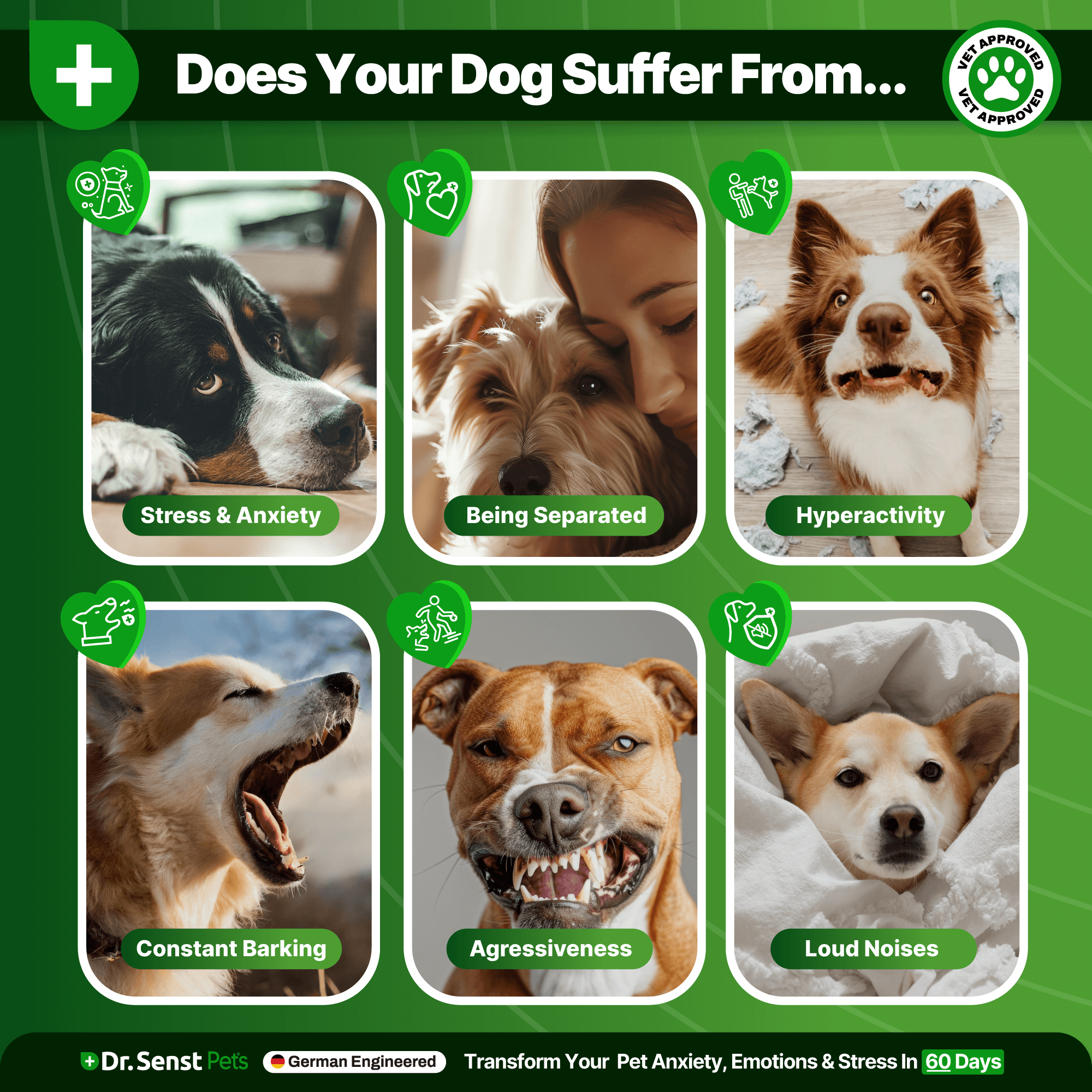
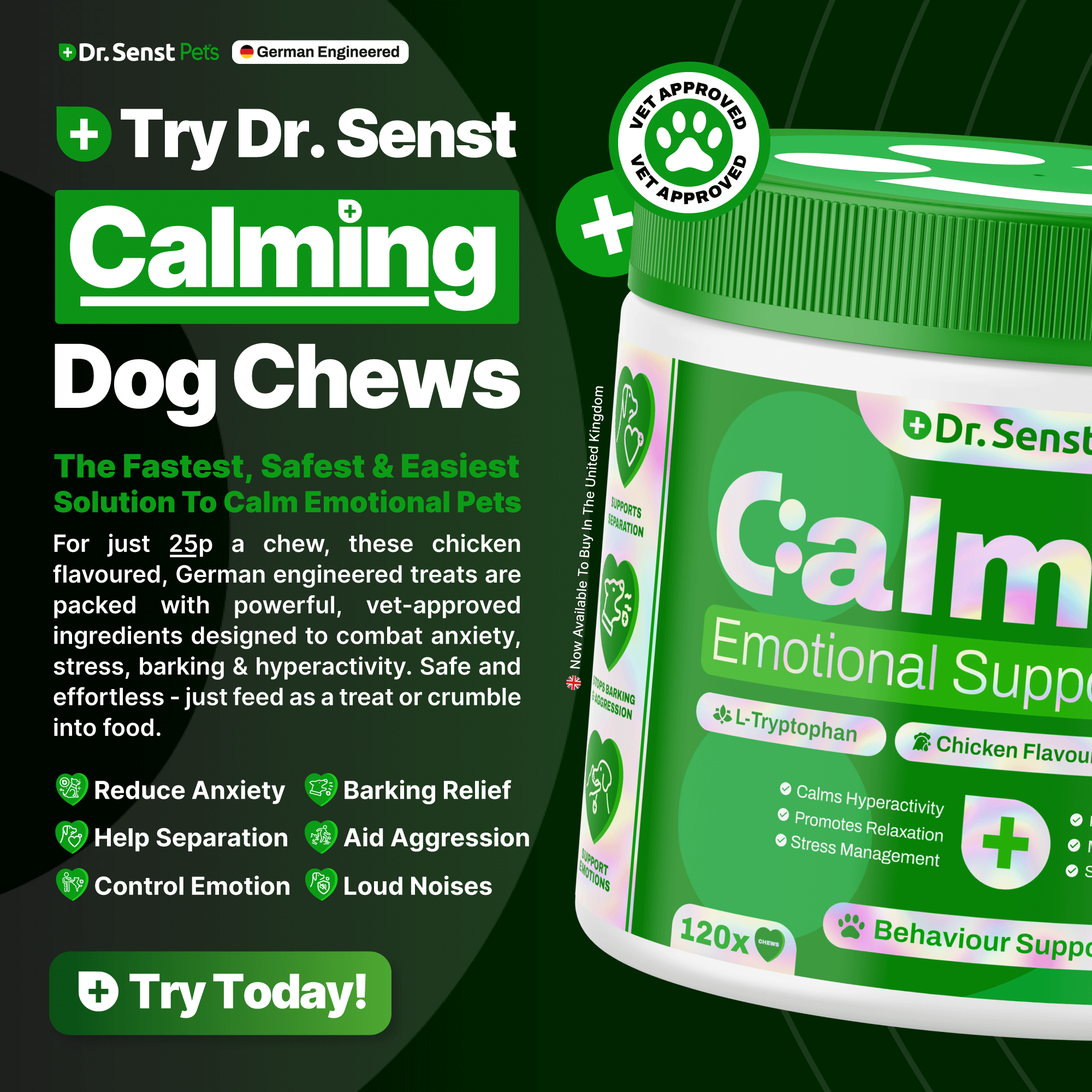
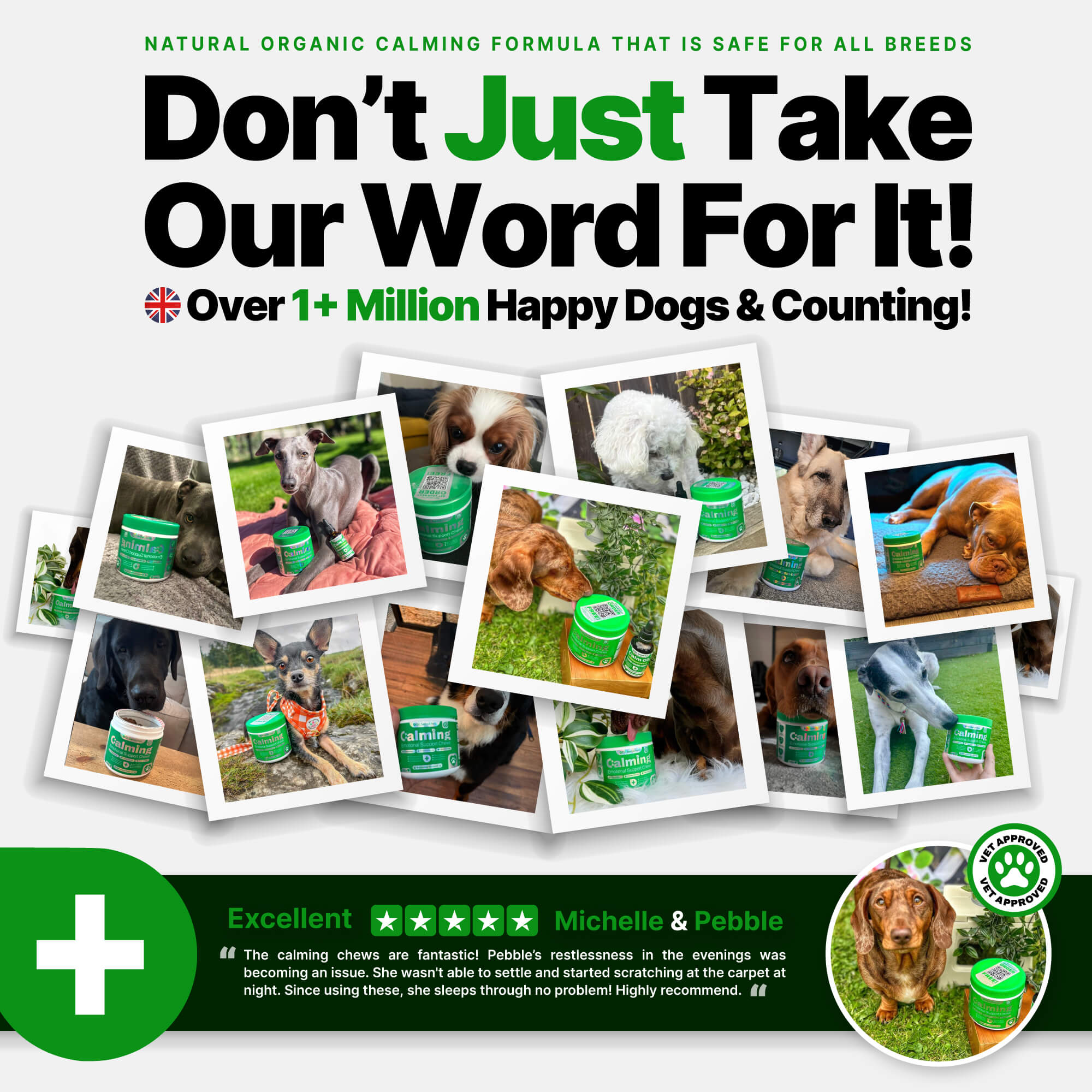


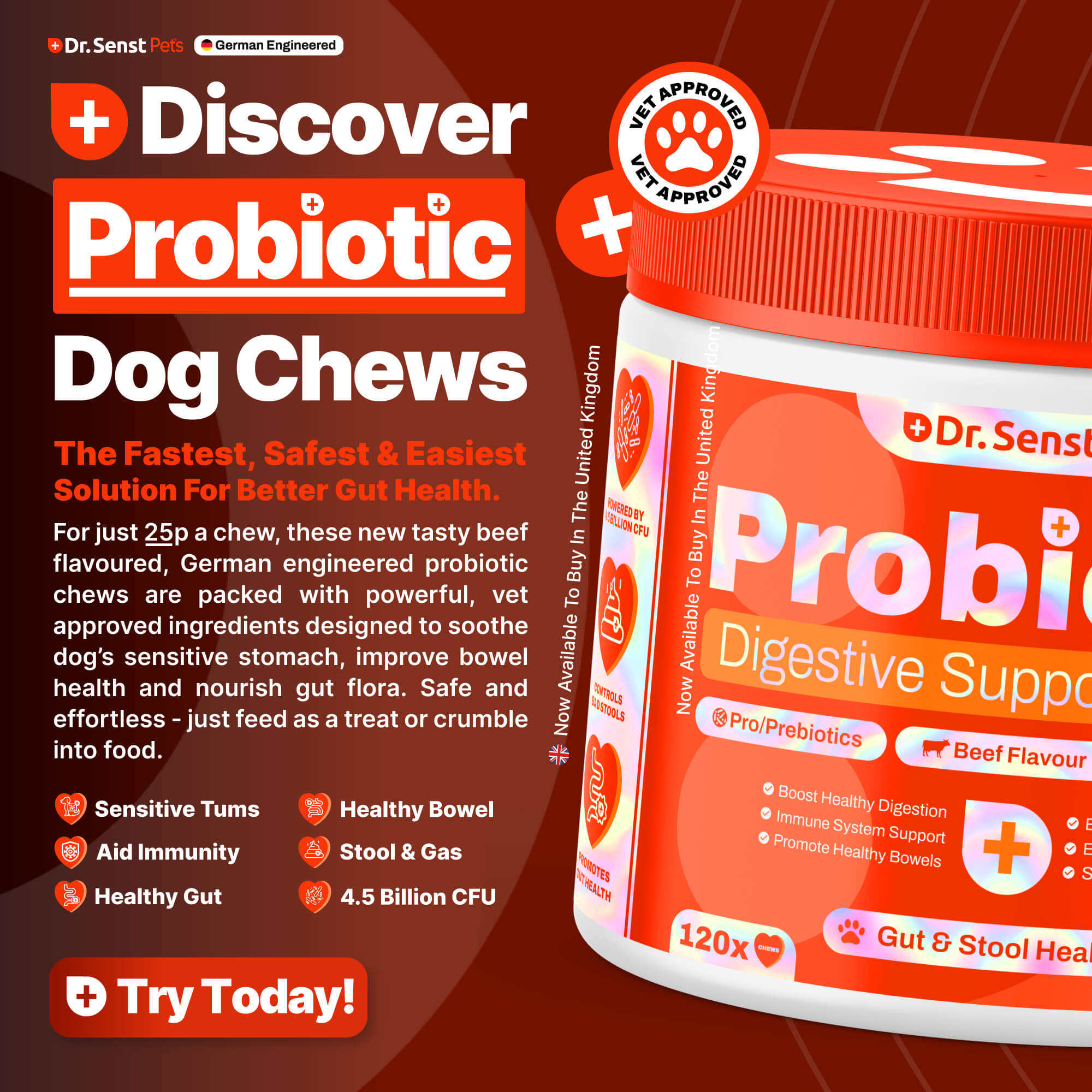
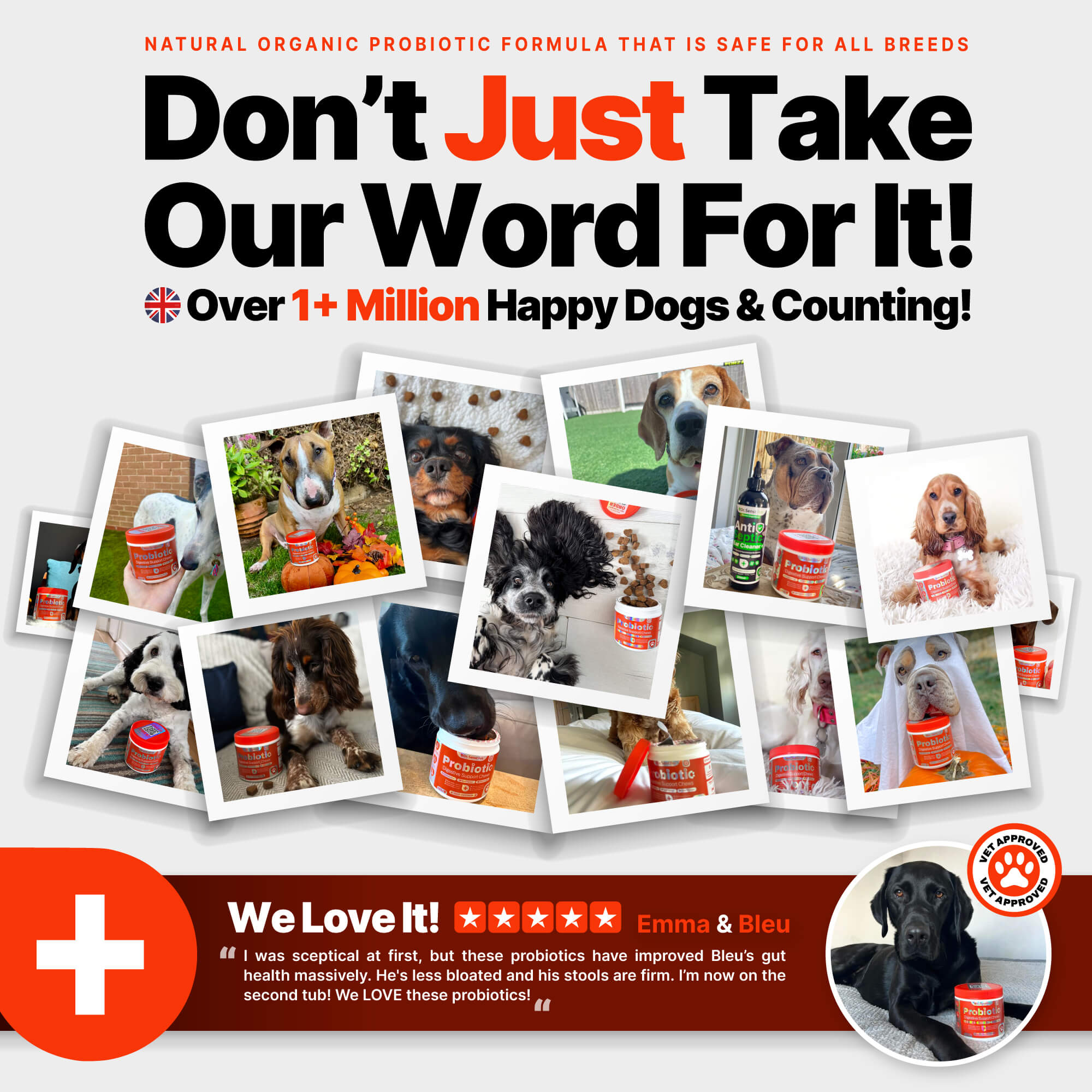








Share:
Tummy Trouble? Top Probiotics Perfect for Your Dog’s Delicate Digestion
Stop the Scratch: Easy Ways to Relieve Your Dog’s Itchy Skin